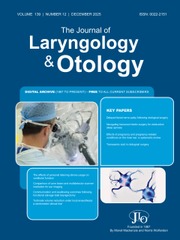No CrossRef data available.
Article contents
The History of Masking as Applied to Tinnitus
Published online by Cambridge University Press: 27 March 2025
Extract
The history of masking as applied to tinnitus must not be confused with the history of masking. Masking, defined as an interference of external sounds upon external sounds, has a long and well established history but the laws and principles which have evolved from those studies do not apply to the masking of tinnitus. Indeed, the masking of tinnitus is sufficiently unique that the term masking is incorrect. Unfortunately, it is too late to change the term now, but it is important that all realize that masking of tinnitus is entirely different from ordinary masking.
The use of masking for relief of tinnitus has been known for a long time. Perhaps the earliest written record is that of Hippocrates, who in 400 B.C. said: ‘Why is it that the buzzing in the ears ceases if one makes a sound? Is it because the greater sound drives out the less?’ (Book 32, paragraph 961-A). Clearly, Hippocrates had tinnitus (we would even guess that he had a noise-type tinnitus of a medium to low pitch) and clearly, he had experienced what we call masking of tinnitus.
- Type
- Session II—Audiologic Considerations (Moderator: Charles I. Berlin)
- Information
- The Journal of Laryngology & Otology , Volume 95 , Issue S4: Proceedings of the First International Tinnitus Seminar (New York, 8-9 June, 1979) , September 1981 , pp. 76 - 79
- Copyright
- Copyright © JLO (1984) Limited 1981


